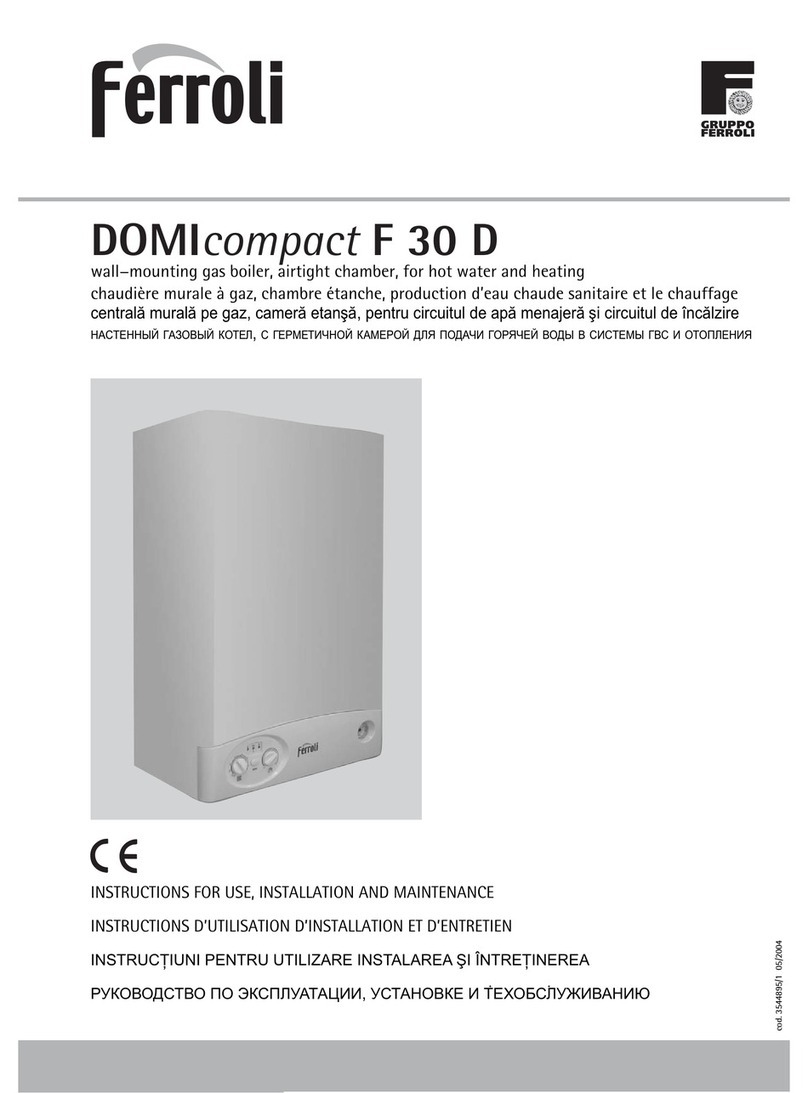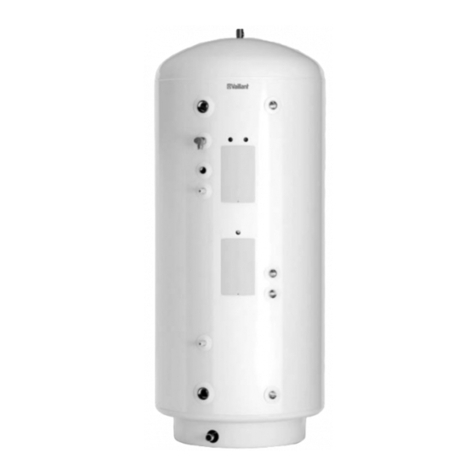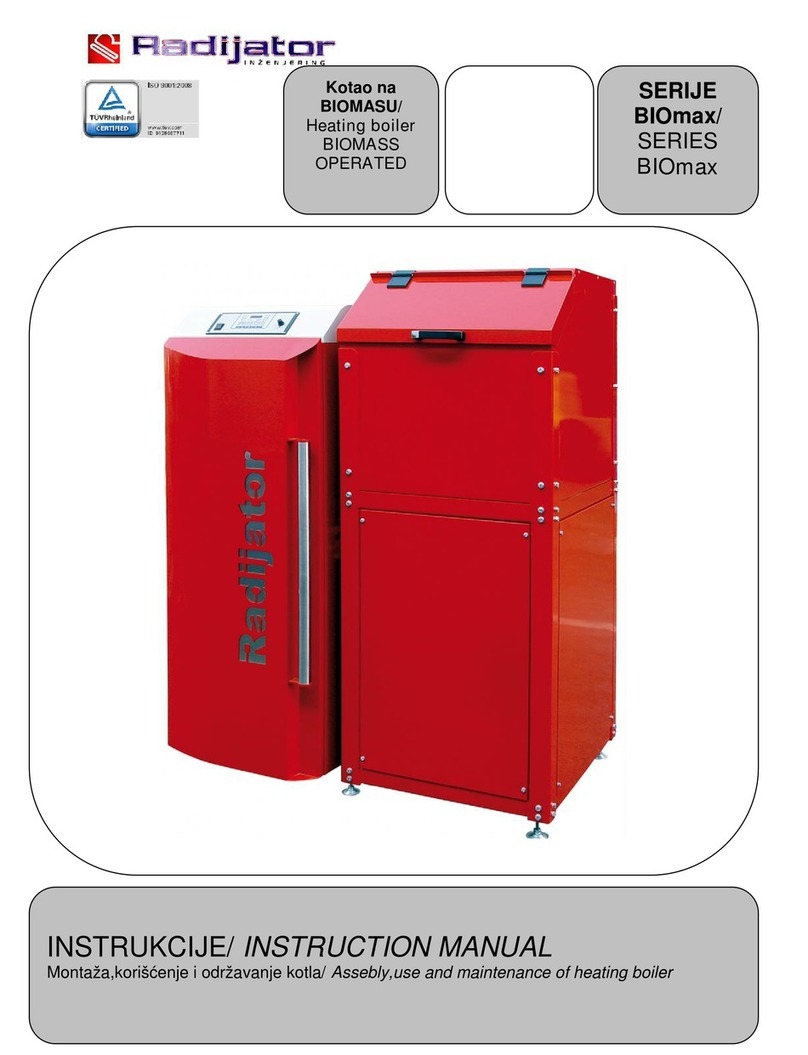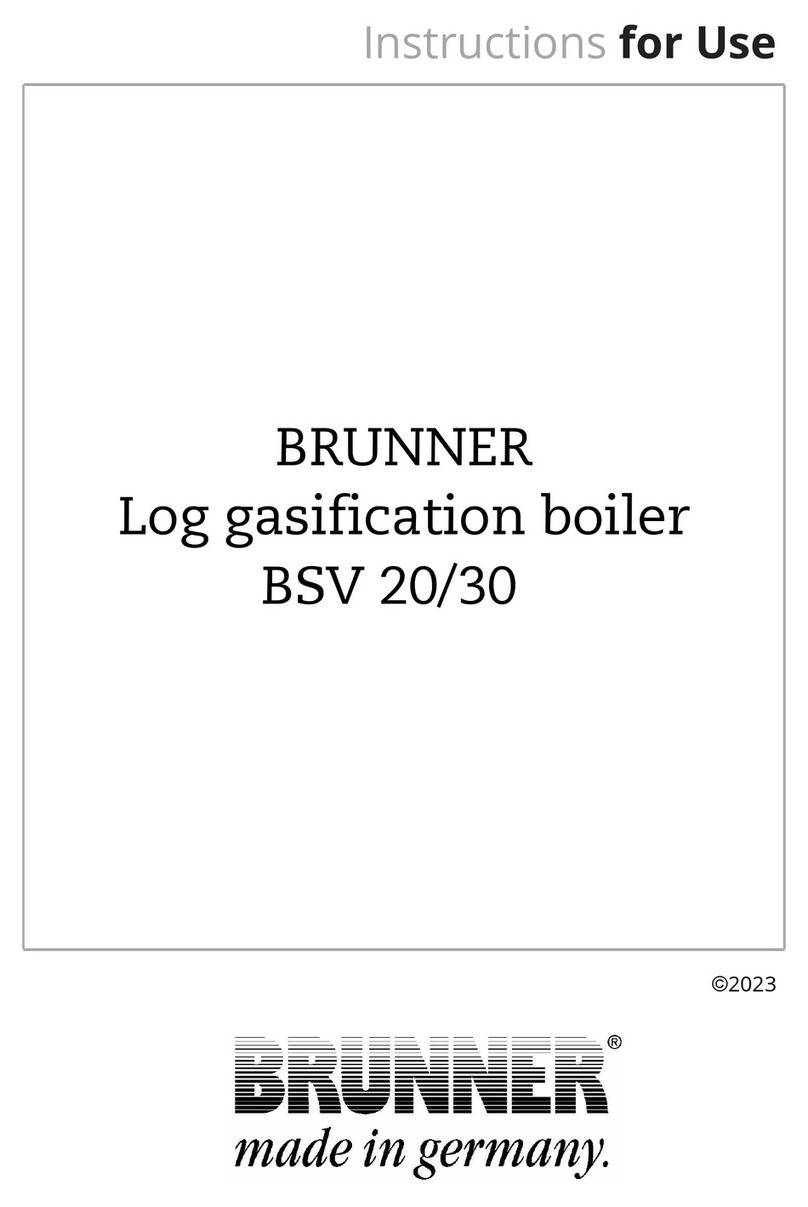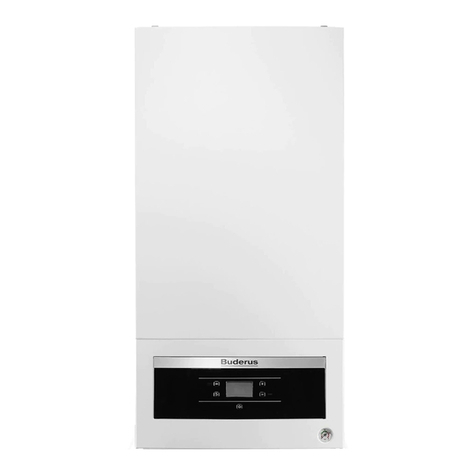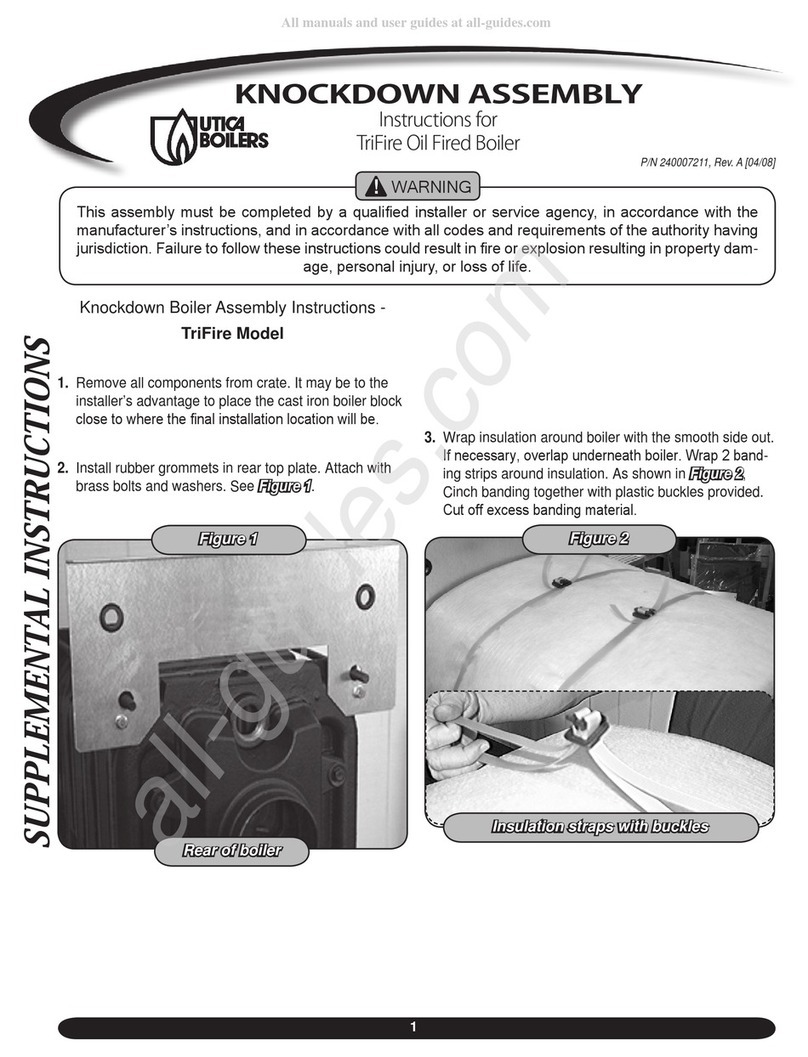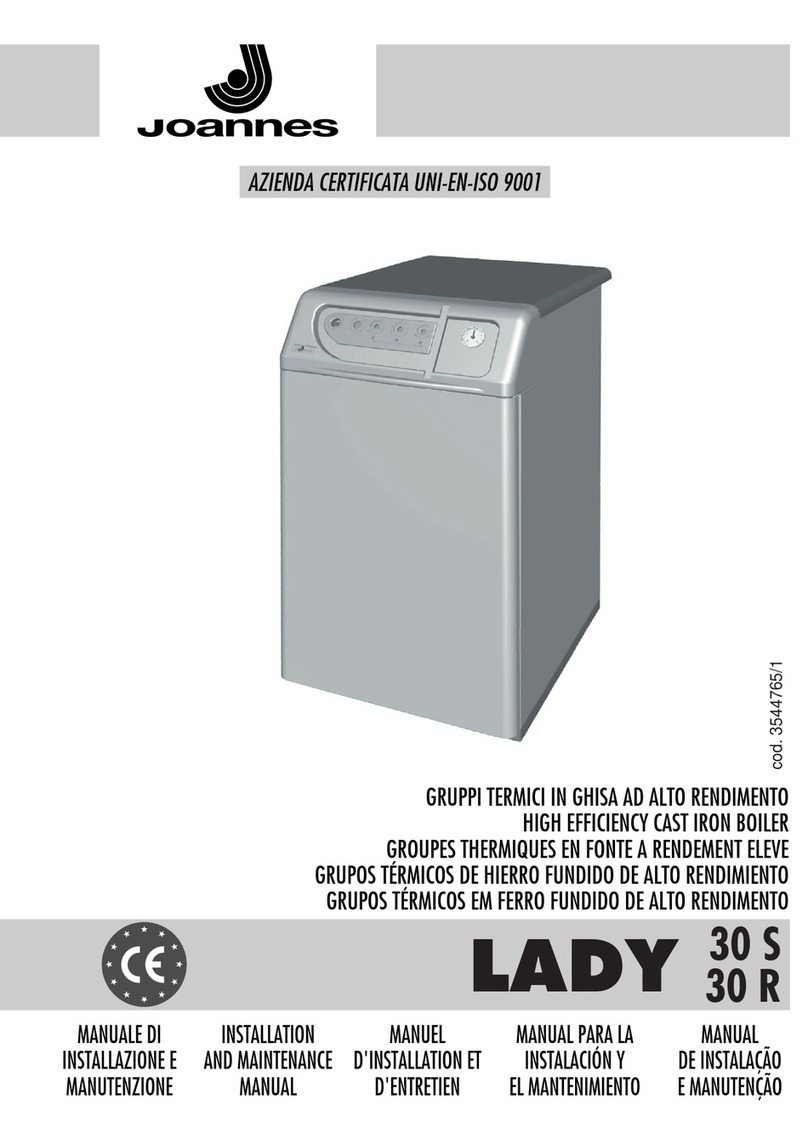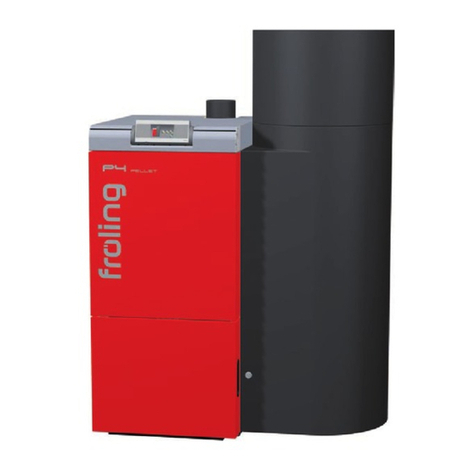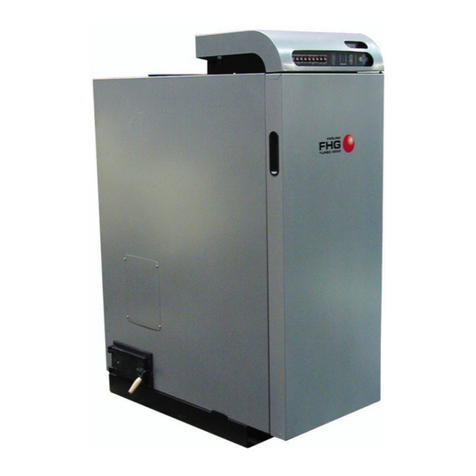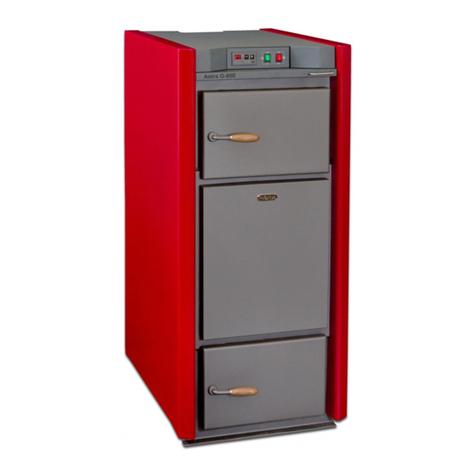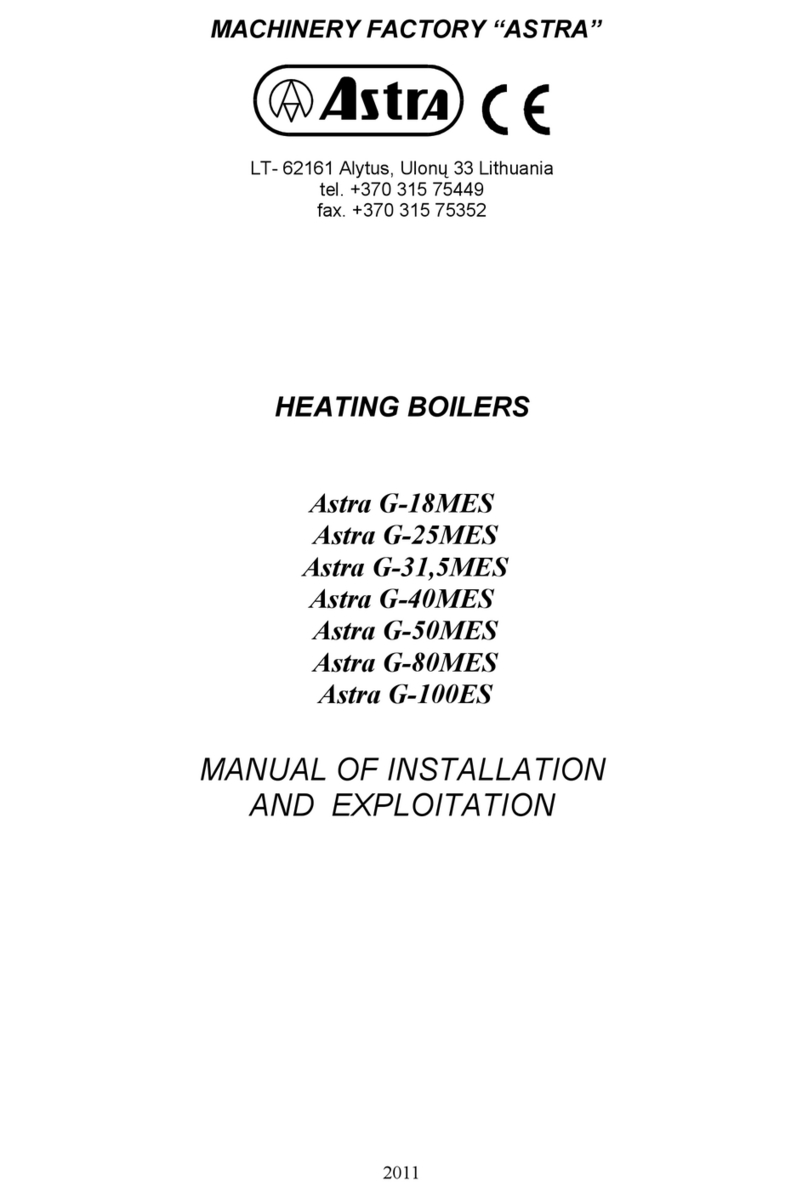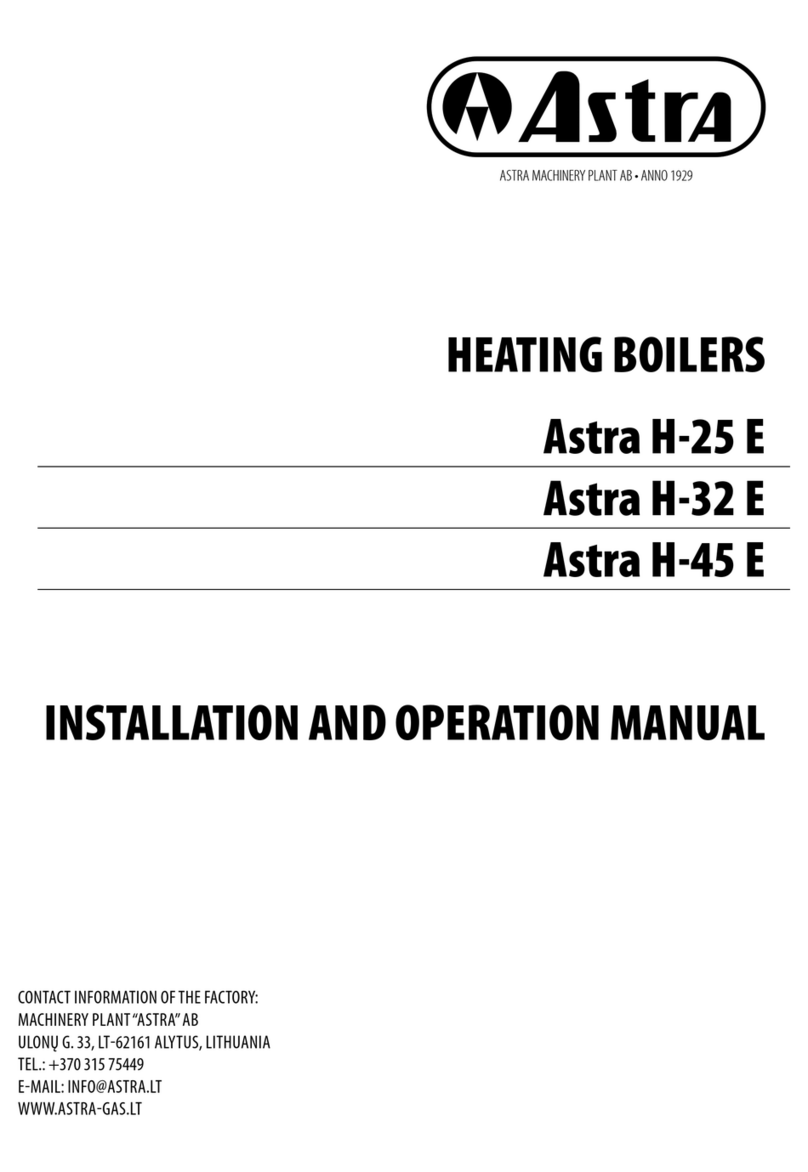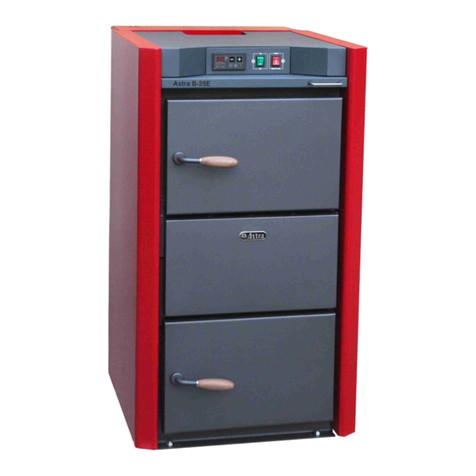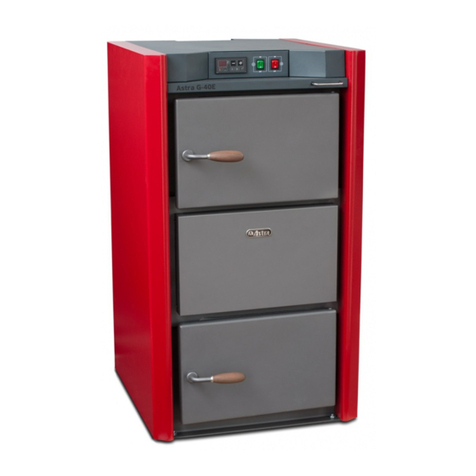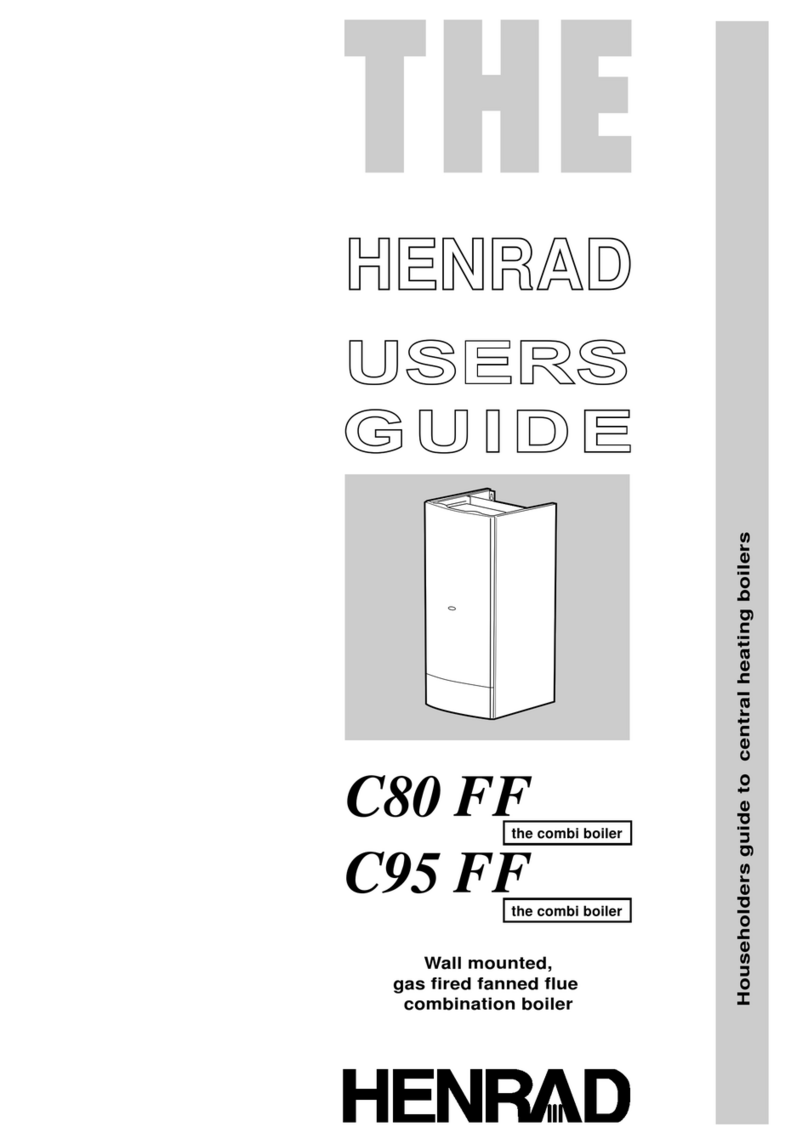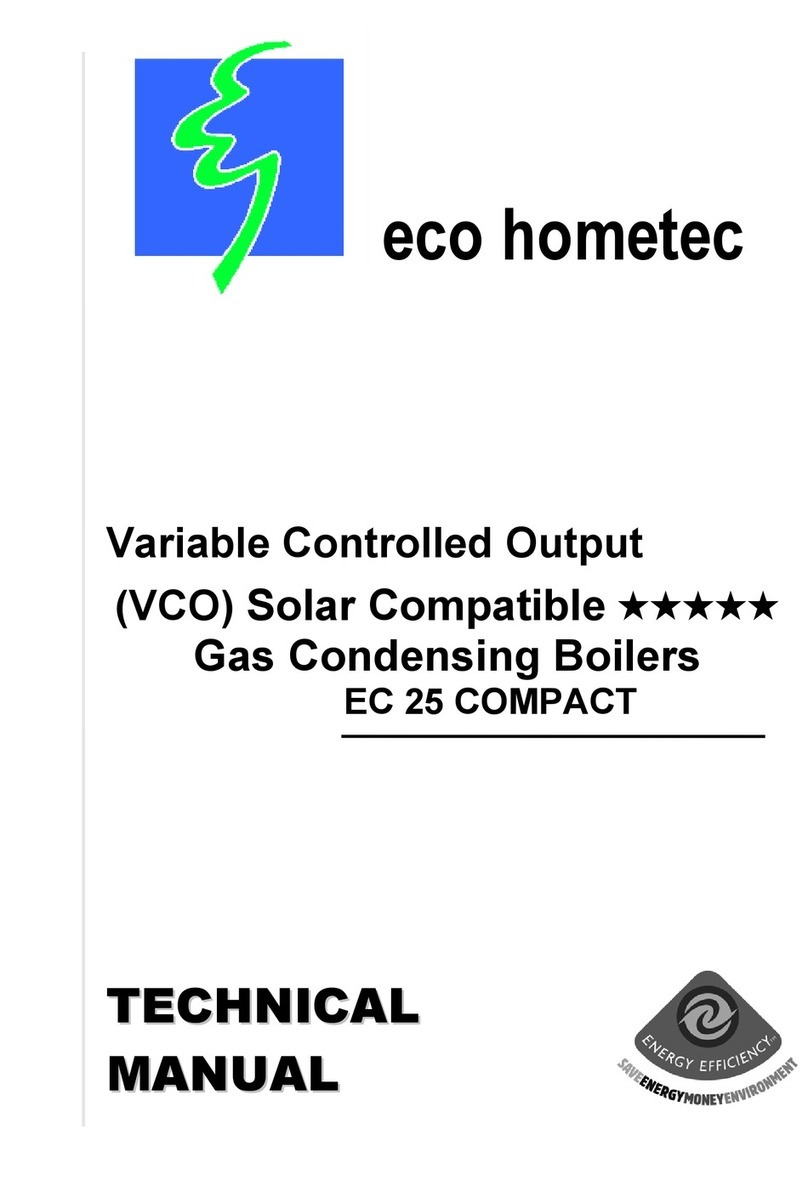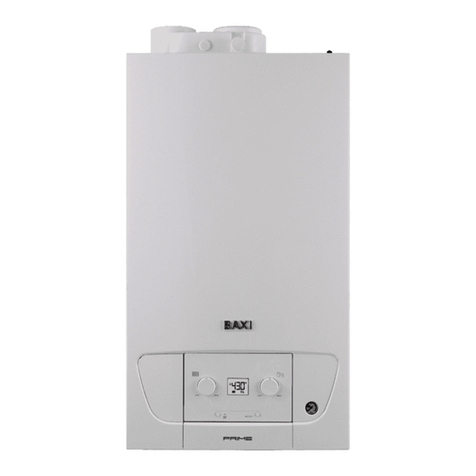its upper supports. Then the tool can be removed and the next plate can be installed in a similar way.
Turbulence plates decrease the temperature of the exhaust smoke. The boiler can be operated without the plates, but then
greater losses of heat through the chimney will occur.
3. INTENDED USE
The heating boiler is designed for the heating of residential and public buildings, manufacturing shops and other buildings
where a closed heating system has been installed. Control and regulation devices are installed in the boiler, which automatically
maintain the set water temperature, ensure economically ecient usage of the boiler and safe operation.
Boilers of this type are designed to burn wood, partially generating gases. Gas is extricated (generated) from the burning
rewood in the upper combustion chamber of the boiler and burned in the lower chamber. The intensity of gas generation
and combustion is regulated by the frequency and duration of air inow into the combustion chambers.
Advantages of the boiler are the following:
• gas generating combustion ensures eective burning of wood and a high eciency coecient since the burning process
takes place at a high temperature of 900°C;
• the heat output of the boiler can be regulated within the range of 40-100%. The boiler is automatically controlled using an electronic
regulator, by switching the ventilator inowing into the combustion chambers o or on, or by regulating the speed of its rotation;
• the combustion period of one fuel load is long due to the large volume of the fuel chamber;
• complete fuel combustion ensures cost-ecient fuel usage;
• the turbulence plates installed in the ue of the boiler enhance heat exchange in the boiler and reduce the temperature
of the smoke in the chimney;
• it is sucient to remove the ashes 1-2 times per week.
4. TRANSPORTATION, STORAGE, UNPACKING
The heating boiler is to be transported and packaged in accordance with the documentation of the manufacturer, protected
from precipitation and dust. It can be transported only in vertical position, fastened to avoid sliding and falling. If the boiler
is transported in other than vertical position, decorative surfaces may be damaged, cladding battered, control and regulation
equipment broken, built-in ceramic inserts may fall down and splinter. The heating boiler should be carefully loaded, unloaded
and transported, without any signicant impact.
The boiler should also be stored in a vertical position. It is not allowed to put one boiler on top of another, as a packaging
frame is not designed for this purpose. The boiler should be stored in a closed room protected from precipitation. The air
humidity of the room should not exceed 80%, in order to avoid condensate forming on the surfaces of the boiler. Storage
temperature may vary from -40°C to +60°C.
If the boiler was transported or stored in minus temperatures, then before it is kindled, it should be kept in plus temperature
for no less than 2 hours.
After the heating boiler is delivered to the site, take o the packing frame and polyethylene lm, unscrew boiler bolts and,
fastening to the packaging base, remove the boiler from the packaging base.
Open the doors of the boiler and check if all elements listed in a delivery kit are included.
The delivery kit consists of the following: boiler - 1 pc.; poker - 1 pc.; scraper - 1 pc.; ventilator - 1 pc.; operation manual - 1
pc.; support legs - 4 pcs.
Check if painted surfaces have not been damaged during transportation, if the components are not bent and if control and
regulation equipment is intact. In case you notice any inadequacies, present your claims to the vendor company.
